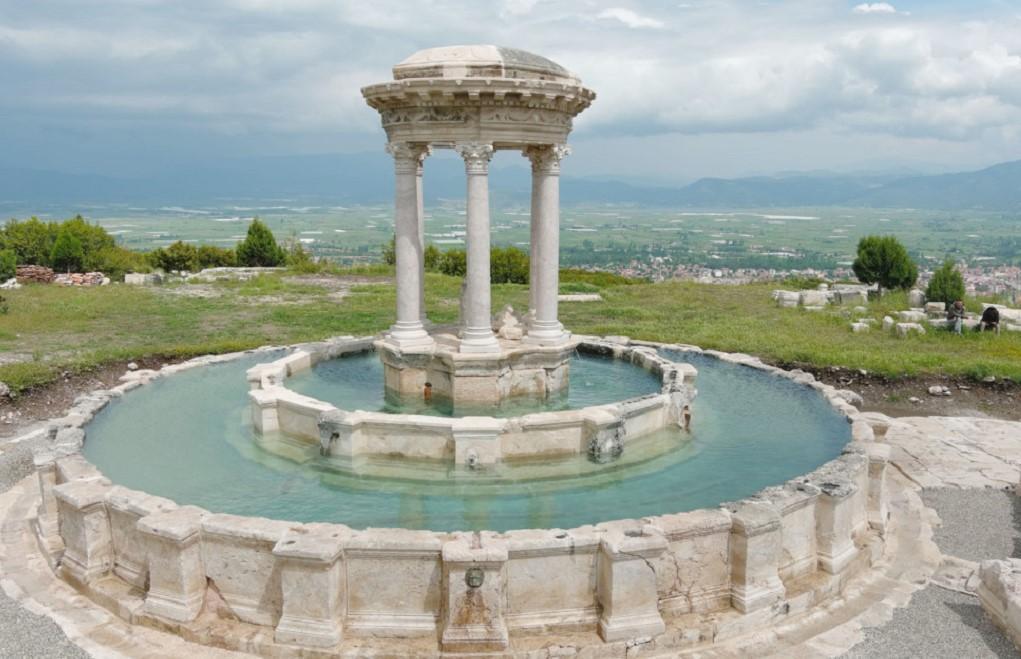
A 2,000-year-old fountain that was discovered to have been active up to the seventh century is now once more supplying water in the Ancient City of Kibyra in Burdur after a recent restoration.
Excavation works started in 2006 in the ancient city of Kibyra. In 2016, Assoc. Prof. Dr. Şükrü Özüdoğru and his team uncovered a fountain structure located in the center of the Agora in Kibyra.
Stating that the fountain was modified with additions in various periods after its initial construction, Özüdoğru said that the structure, decorated with columns and sculptures, consisted of a round body formed with blockwork in the center, with two pools surrounding it.
According to the findings, the fountain was built during the reconstruction of the city after the quake of 23 A.D.
Özüdoğru pointed out that no trace of the 12 bronze statues that were originally supposed to be above the second pool was found.
“Although it is understood that the roof of the fountain collapsed in the 417 A.D. quake, our data shows that the structure was used with the same function in the Early Byzantine Age with some modifications, possibly until the end of the seventh century A.D.”
Özüdoğru noted that the restoration was completed using original architectural elements, except for a part of the roof. The 24 architectural elements that did not survive were produced as imitations. The restoration works started in August 2022 and were completed by Dec. 21 of the same year.
A water line was laid to the structure in May 2023, Özüdoğru said, and the water supply was provided from the fountain’s original ancient spring.
“In its original state, the water flowed from lion or panther-shaped gargoyles. Two of these statues, one probably depicting Heracles and one depicting the young Dionysus, are on display in the Burdur Museum. Within the scope of the restoration works, limestone copies of these statues were placed in their original places.”